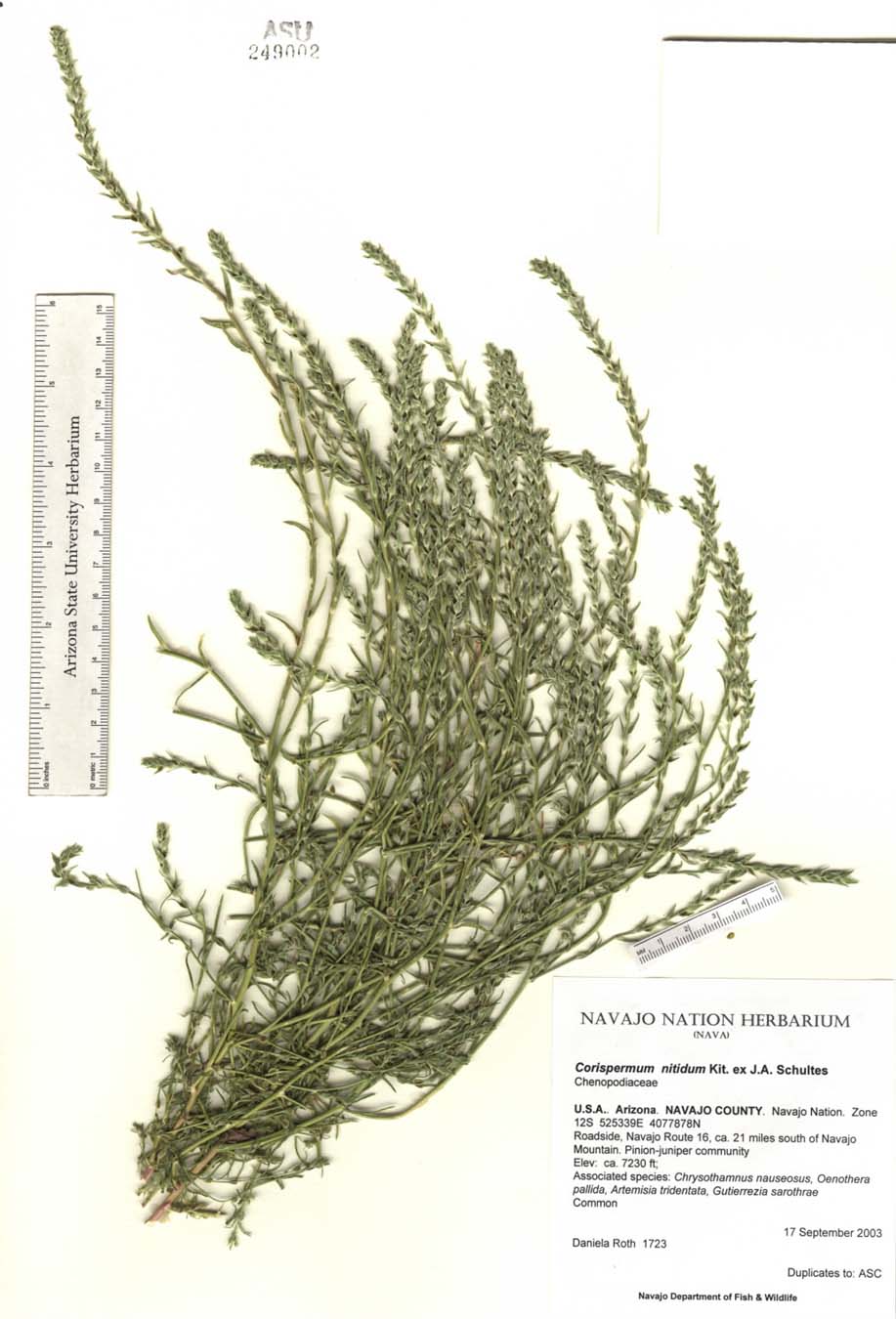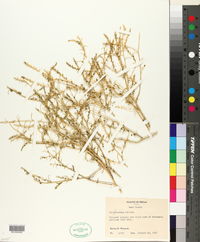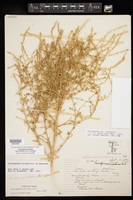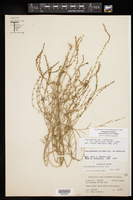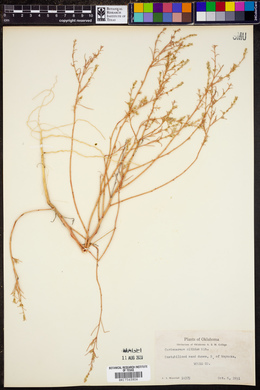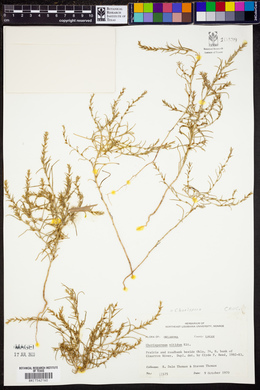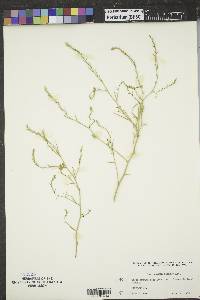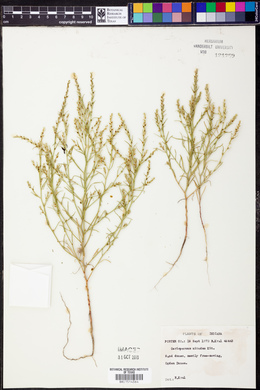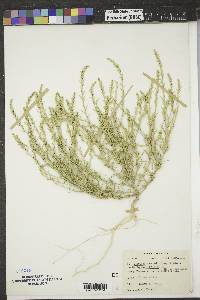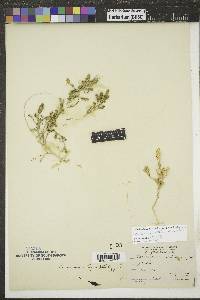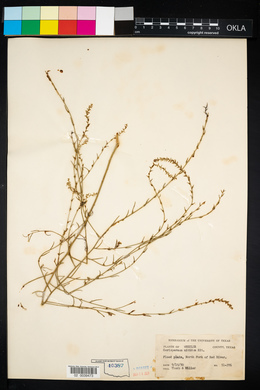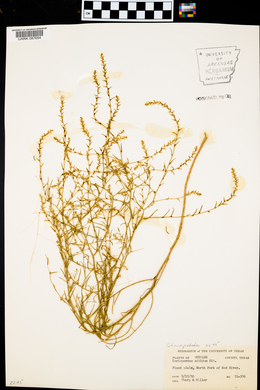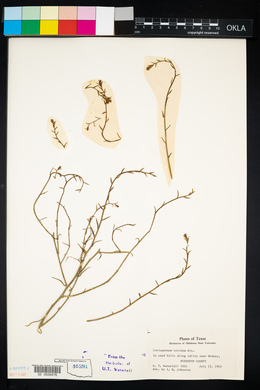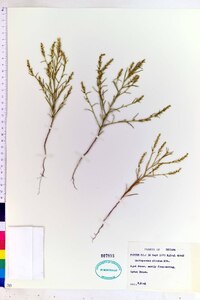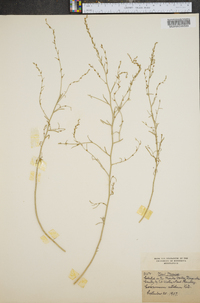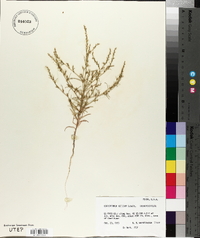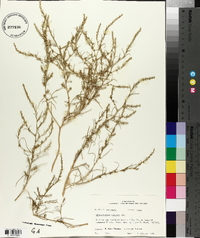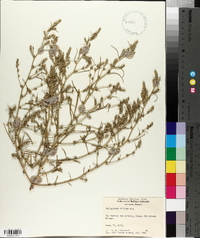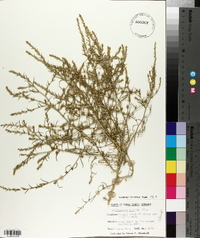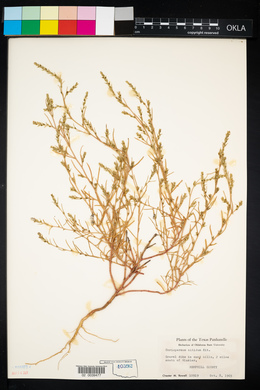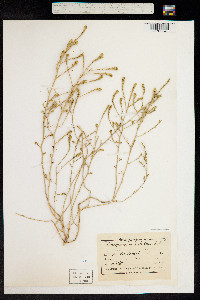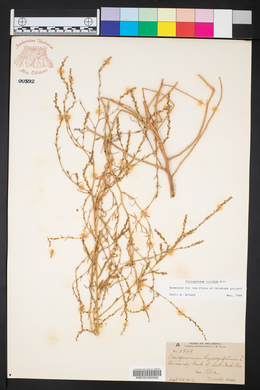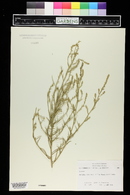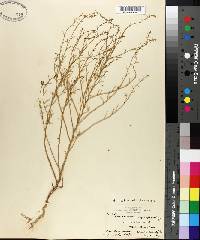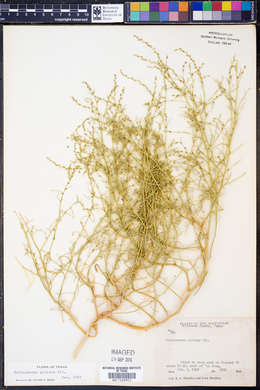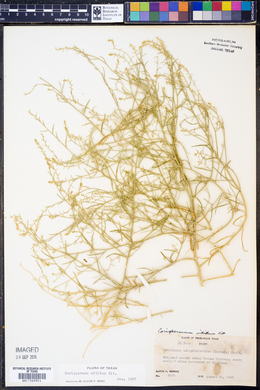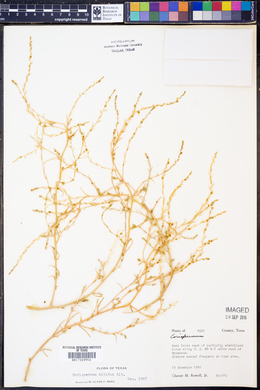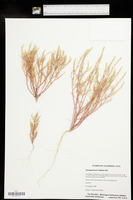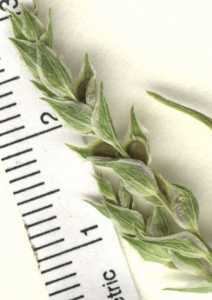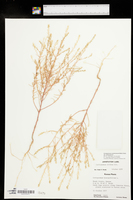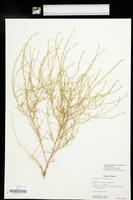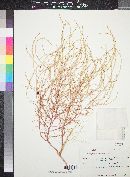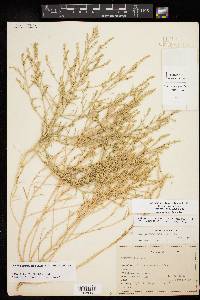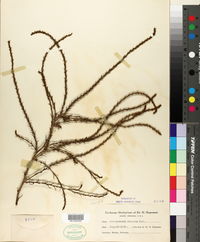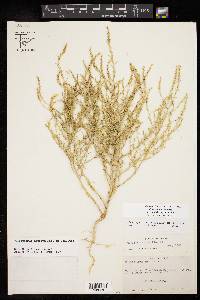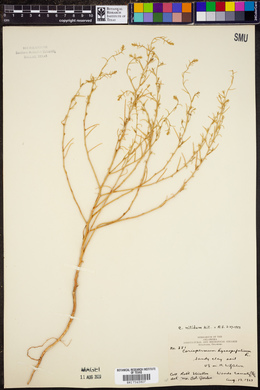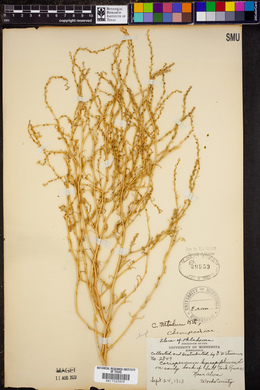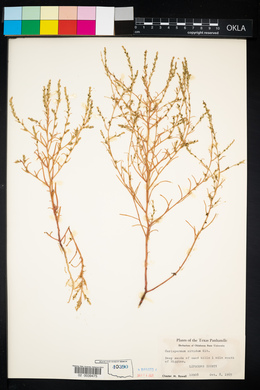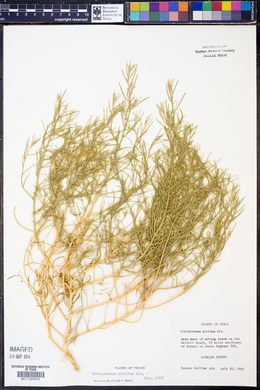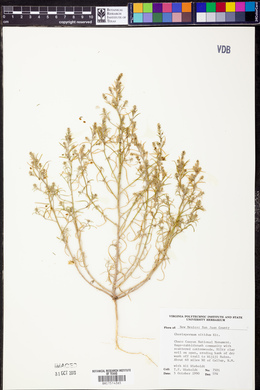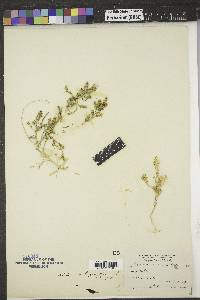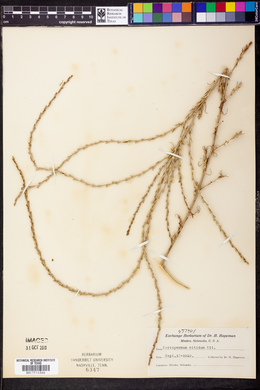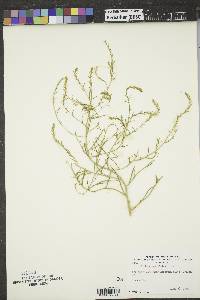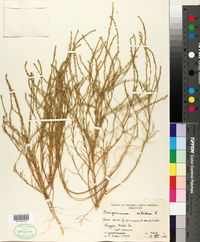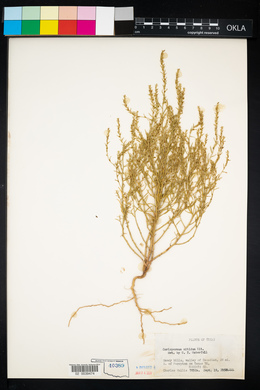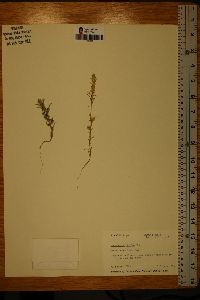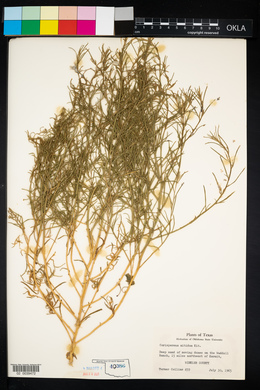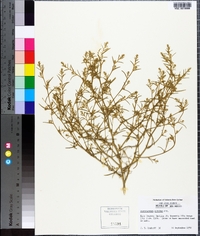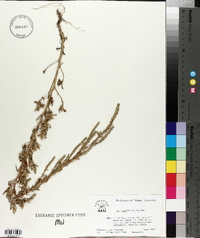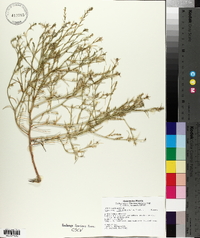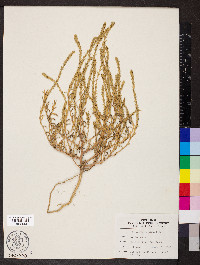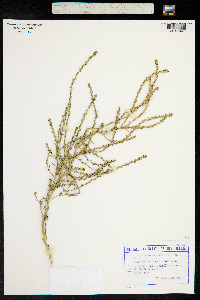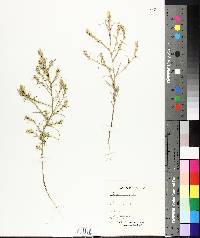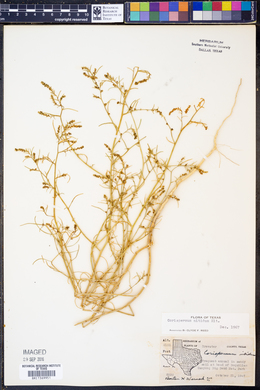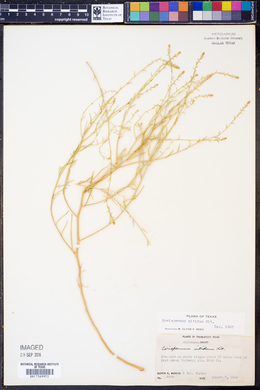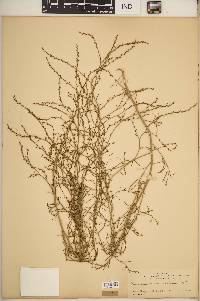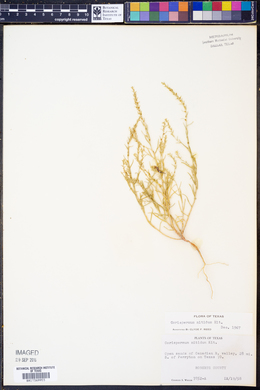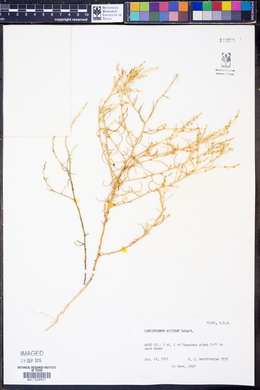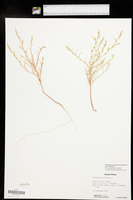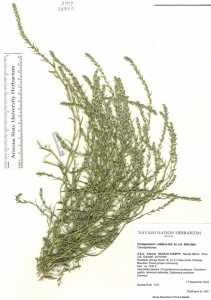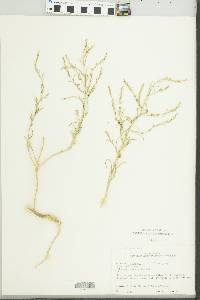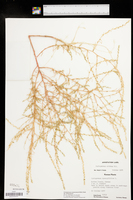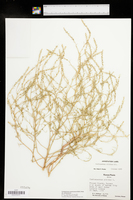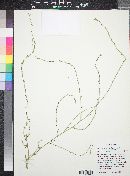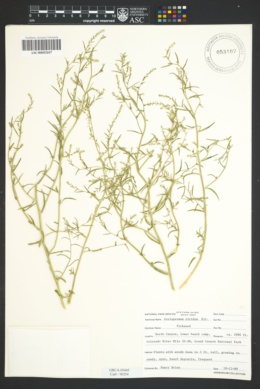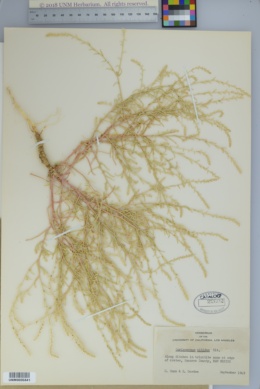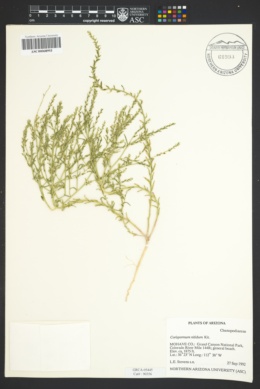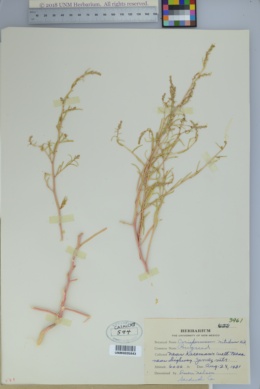Corispermum nitidum
|
|
|
|
Family: Amaranthaceae
Shiny Bugseed
|
Plants branched from base (rarely slightly above base), 10-55(-70) cm, glabrous or sparsely covered with dendroid or stellate hairs (then often becoming glabrous). Leaf blades narrowly linear or filiform (rarely linear), usually convolute or folded (especially in mature and/or dry plants), rarely plane (when young), 2-4(-5) × 0.1-0.2 cm. Inflorescences lax, usually interrupted from base to apex, rarely slightly condensed (only at apex when immature), narrowly linear or linear. Bracts narrowly ovate-lanceolate, lanceolate, linear-lanceolate, or linear, 0.5-1.5(-2) × 0.1-0.3(-0.4) cm, (most bracts within inflorescence rather uniform, usually narrower than mature fruits). Perianth segments 1-3. Fruits straw colored (yellowish brown), light brown, deep olive green, occasionally tinged with red, without spots and warts, convex abaxially, plane or slightly concave adaxially, obovate or broadly elliptic, often broadest near middle (rarely slightly above), 2.3-3.3(-3.5) × (1.8-)2-2.8 mm, shiny; wing translucent, thin, usually 0.1-0.3 mm wide, margins entire, apex rounded. Flowering late summer-early fall. Sand dunes, sandy and gravely shores, waste places; supposedly introduced; se Europe (with small extension into w Asia). Specimens of Corispermum nitidum superficially similar to, or almost indistinguishable from, European C. nitidum in their habit (especially when immature) are fairly common in North American collections. Judging from their fruit morphology, they mostly belong to C. americanum (or probably to introgressive hybrids between the introduced C. nitidum and native C. americanum). I have not seen any unquestionably reliable specimens of C. nitidum sensu stricto from North America. More detailed comparative experimental and field studies are needed in order to clarify the complicated taxonomy of the group in North America. Excluded species: No specimens resembling typical Corispermum orientale were found in North American collections. However, small-fruited and almost wingless specimens of C. villosum may be confused with C. orientale. A specimen of Corispermum marschallii was found by the author at MO among North American specimens (mis)identified as C. hyssopifolium. However, the label is virtually illegible, and probably the specimen was misplaced. No other indication of occurrence of that unmistakable Eurasian species in North America has been found yet. Records of Corispermum sibiricum from the Great Plains (Great Plains Flora Association 1986) were based on misidentified collections of C. pallasii or C. americanum, which belong to the same subsection.
Much like no. 2 [Corispermum hyssopifolium L.]; spikes loosely fld, to 10 cm, 3-4 mm thick; bracts ovate to linear-oblong, 2-8 mm, scarcely imbricate, exposing the axis, the lower narrower than the fr, the upper only scarcely longer than the fr; fr 2-3.5 mm, with a narrow, pale wing; 2n=18. Native of Eurasia, now well established as a weed over much of the U.S., esp. in sandy soil and along lake-shores. Gleason, Henry A. & Cronquist, Arthur J. 1991. Manual of vascular plants of northeastern United States and adjacent Canada. lxxv + 910 pp. ©The New York Botanical Garden. All rights reserved. Used by permission. From Flora of Indiana (1940) by Charles C. Deam ...... Indiana Coefficient of Conservatism: C = null, non-native Wetland Indicator Status: FACW Diagnostic Traits: leaves convolute, midrib obscure; inflorescence spicate (diameter nearly the same throughout, less than 5 mm wide); flowers solitary in the axiles of acuminate bracts; fruits translucent-winged. |

